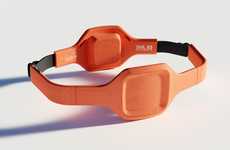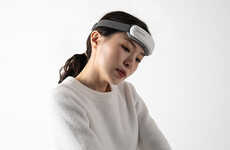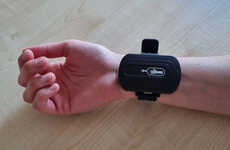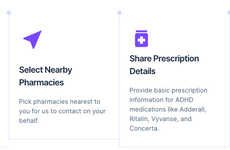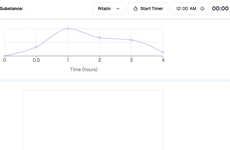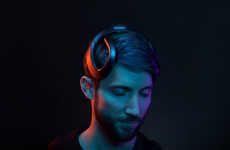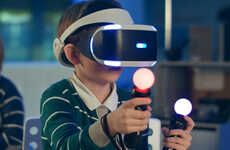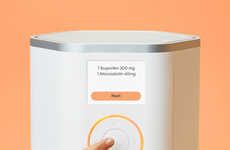
Anouk Wipprecht's Medical Wearable Helps Doctors Monitor Kids
Kalin Ned — June 7, 2019 — Life-Stages
References: anoukwipprecht.nl & fastcompany
A new, slick and non-invasive medical wearable has been designed to help doctors monitor kids with ADHD in the daily environment. The device is cutting-edge as it is portable, non-invasive and themed after the myth of the unicorn. As a result, the product allows for doctors to seamlessly monitor the P300 wave in kids.
A delayed P300 wave — "a brain mechanism used to evaluate or categorize events that happen," is indicative of a child with ADHD. Anouk Wipprecht's medical wearable is able to monitor the activity in real time which will allow for a more accurate diagnosis, as well as better solutions for addressing the issue. These can come in the form of environmental modification or the administration of medication only based on necessity.
Photo Credits: Anouk Wipprecht/g.Tec, Christina Bakuchava
A delayed P300 wave — "a brain mechanism used to evaluate or categorize events that happen," is indicative of a child with ADHD. Anouk Wipprecht's medical wearable is able to monitor the activity in real time which will allow for a more accurate diagnosis, as well as better solutions for addressing the issue. These can come in the form of environmental modification or the administration of medication only based on necessity.
Photo Credits: Anouk Wipprecht/g.Tec, Christina Bakuchava
Trend Themes
1. Non-invasive Medical Wearables - The development of non-invasive medical wearables opens up opportunities for more accurate monitoring and diagnosis of health conditions in children.
2. Personalized Monitoring Devices - The use of themed wearables, such as unicorn-themed devices, adds a fun and engaging element to medical monitoring, providing a personalized experience for children.
3. Real-time Data Analysis - Real-time monitoring and analysis of brain activity, like the P300 wave, enable doctors to make more accurate diagnoses and provide targeted solutions for addressing health conditions in children.
Industry Implications
1. Healthcare Technology - The healthcare technology industry can capitalize on the development of non-invasive medical wearables to enhance monitoring and diagnosis capabilities.
2. Wearable Technology - The wearable technology industry can explore the use of personalized monitoring devices, such as themed wearables, to offer a more engaging and tailored user experience.
3. Data Analysis and Healthcare - The data analysis and healthcare industry can leverage real-time monitoring and analysis of brain activity to improve diagnostic accuracy and provide more effective treatment strategies for children with ADHD.
5.5
Score
Popularity
Activity
Freshness


